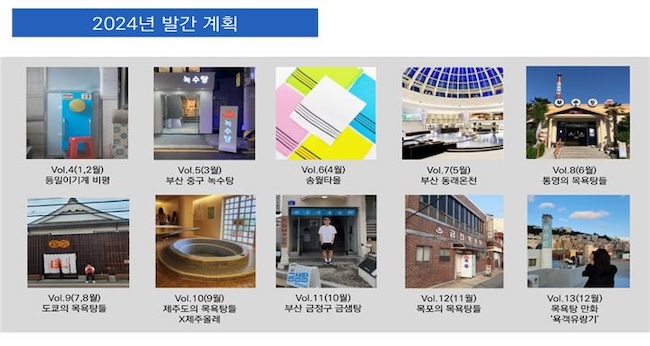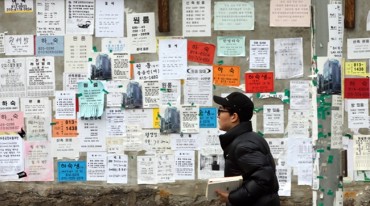
A new magazine that translates roughly to “Neighborhood Bathhouse” in English is capturing the essence and cultural significance of local bathhouses. (Image courtesy of Site Branding)
BUSAN, Dec. 18 (Korea Bizwire) – In the port city of Busan, a new magazine that translates roughly to “Neighborhood Bathhouse” in English is capturing the essence and cultural significance of local bathhouses, a fading yet cherished community staple.
This publication is a project of the urban branding company Site Branding’s in-house team, “Smooth Bath Research Institute.”
The magazine’s publisher, Mok Ji-soo of Site Branding, emphasizes the need not only to observe the gradual disappearance of neighborhood bathhouses but to actively engage in pondering their fundamental value and role in the community. The intent is to prepare for a future that still appreciates and includes these bathhouses.

“Neighborhood Bathhouse” focuses on the warm culture created by these bathhouses in various neighborhoods. (Image courtesy of Site Branding)
“Neighborhood Bathhouse” focuses on the warm culture created by these bathhouses in various neighborhoods. It aims to foster a consensus on the importance of preserving these communal spaces as valuable cultural assets.
Site Branding, which launched the series in October with its first issue featuring ‘Busan Bath’, followed by ‘Gudeok Bath’ in November, and ‘Bongrae Bath’ in December, plans to publish ten issues a year. During the peak winter and summer months, January-February and July-August, combined issues are expected.

Mok noted that neighborhood bathhouses serve as spaces where community members, regardless of age, occupation, or status, can spend “anonymous time” together in their most vulnerable state, noting that these bathhouses have functioned as community hubs. (Image courtesy of Site Branding)
The scope of “Neighborhood Bathhouse” goes beyond introducing Busan’s bathhouses. Future editions will cover bathhouses nationwide and delve into stories related to the bathing industry, including a special feature on Tokyo’s bathhouses.
Mok noted that neighborhood bathhouses serve as spaces where community members, regardless of age, occupation, or status, can spend “anonymous time” together in their most vulnerable state, noting that these bathhouses have functioned as community hubs.
“Instead of remaining stuck in memories of the past, we want to collectively explore and rediscover the future of bathhouses,” he added.
Ashley Song (ashley@koreabizwire.com)






